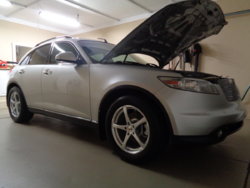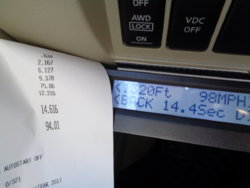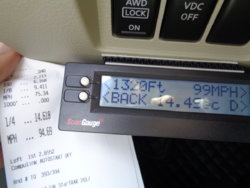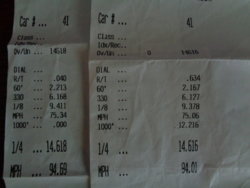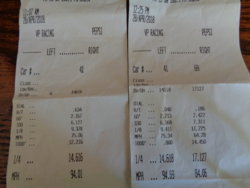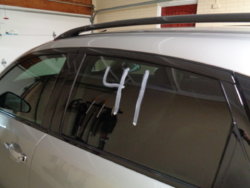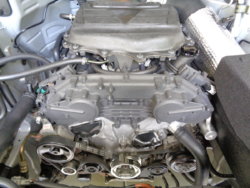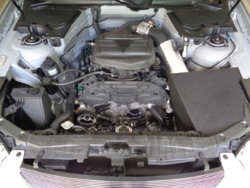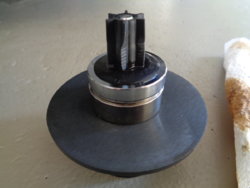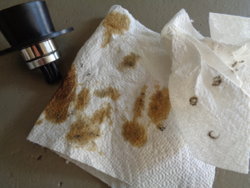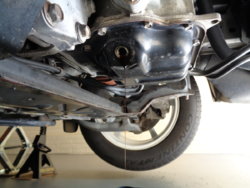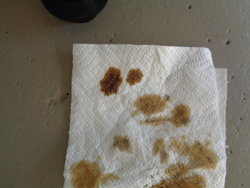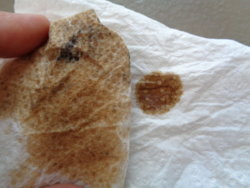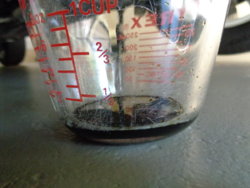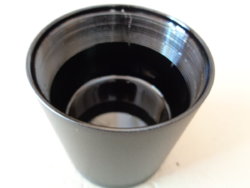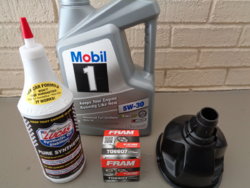onthemove
Member
onthemoveMOD'S Tire Mod;
Got the tires trued today. Very smooth ride, better mileage, faster acceleration, longer lasting(?) and noise reduction, all thanks to less friction and a perfectly round tire, or so the claim goes. They feel really nice until I get on the freeway when the steering wheel shakes at certain speeds. The front passenger side was a little out of round, more than the other three thus more material was removed. Now I've got to get them balanced. Gotta get up early in the morning to beat the rest of the assholes that have the same idea, the idea being that they're going to get to the tire dealer 1st so they don't have to sit and wait.
The piece of equipment in pic 3 was built in the 50's and at the time it cost $7k. That was a lot of $ back then. It was a trip watching this 40 year veteran of this trade do his thing and slice the shit out of my new tires. I'd say he removed a 1/4 pound off each and a bit more on the odd ball tire . Discount Tire told me how great all the tires were and none were out of round. I went back and had them replace the one that was unlike the other three and closest to becoming problematic. Someone's lying here and I know it's not the tire truing guy.
. Discount Tire told me how great all the tires were and none were out of round. I went back and had them replace the one that was unlike the other three and closest to becoming problematic. Someone's lying here and I know it's not the tire truing guy.
I learned a few things from this guy. He told me Michelin's have the best tolerance and when he trues them, the least amount of material needs to be removed. He has trued tires from known race car drivers, many different high end makes, and supercars. I never heard of this until a week ago.
Spent part of my friday night removing wheel weights. Fortunately I figured out a way to do so taking the least amount of time. I researched this in the past and again briefly before starting tonight. Nothing new. Some may already know this but for those that do not;
use a heat gun on low and heat up the weights
use a plastic sharp edged tool to pop the weights off
heat up the foam-like tape and roll that off the wheel
heat up the adhesive then go to town with a terry cloth and googone
This worked extremely well and fast.

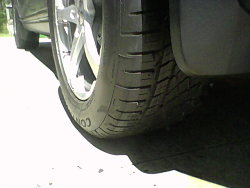

Got the tires trued today. Very smooth ride, better mileage, faster acceleration, longer lasting(?) and noise reduction, all thanks to less friction and a perfectly round tire, or so the claim goes. They feel really nice until I get on the freeway when the steering wheel shakes at certain speeds. The front passenger side was a little out of round, more than the other three thus more material was removed. Now I've got to get them balanced. Gotta get up early in the morning to beat the rest of the assholes that have the same idea, the idea being that they're going to get to the tire dealer 1st so they don't have to sit and wait.
The piece of equipment in pic 3 was built in the 50's and at the time it cost $7k. That was a lot of $ back then. It was a trip watching this 40 year veteran of this trade do his thing and slice the shit out of my new tires. I'd say he removed a 1/4 pound off each and a bit more on the odd ball tire
I learned a few things from this guy. He told me Michelin's have the best tolerance and when he trues them, the least amount of material needs to be removed. He has trued tires from known race car drivers, many different high end makes, and supercars. I never heard of this until a week ago.
Spent part of my friday night removing wheel weights. Fortunately I figured out a way to do so taking the least amount of time. I researched this in the past and again briefly before starting tonight. Nothing new. Some may already know this but for those that do not;
use a heat gun on low and heat up the weights
use a plastic sharp edged tool to pop the weights off
heat up the foam-like tape and roll that off the wheel
heat up the adhesive then go to town with a terry cloth and googone
This worked extremely well and fast.


Last edited:


